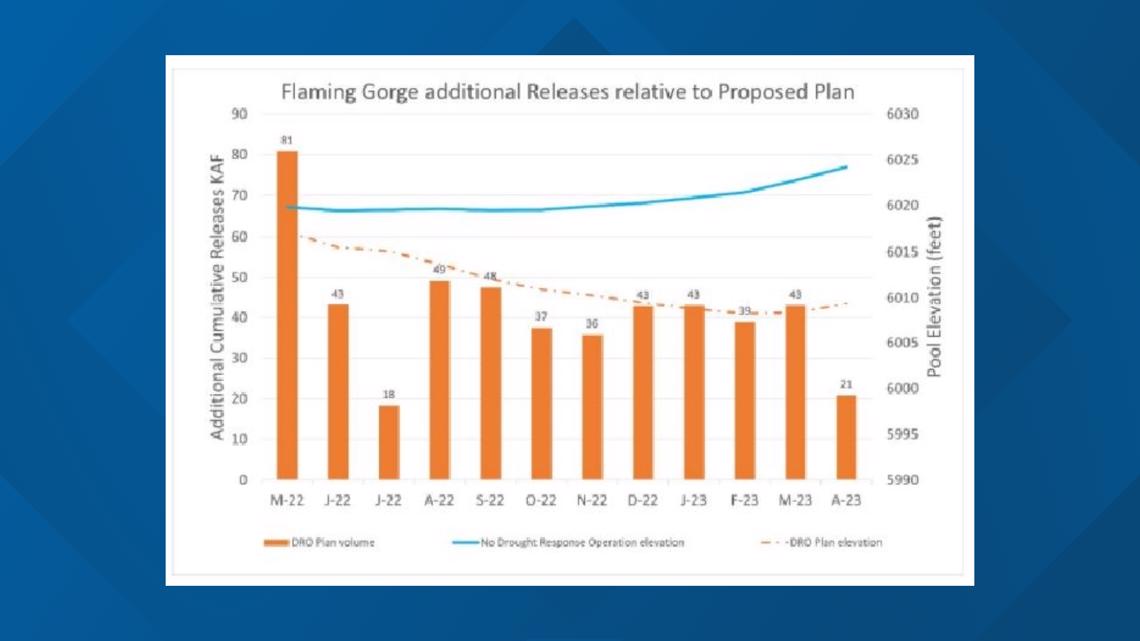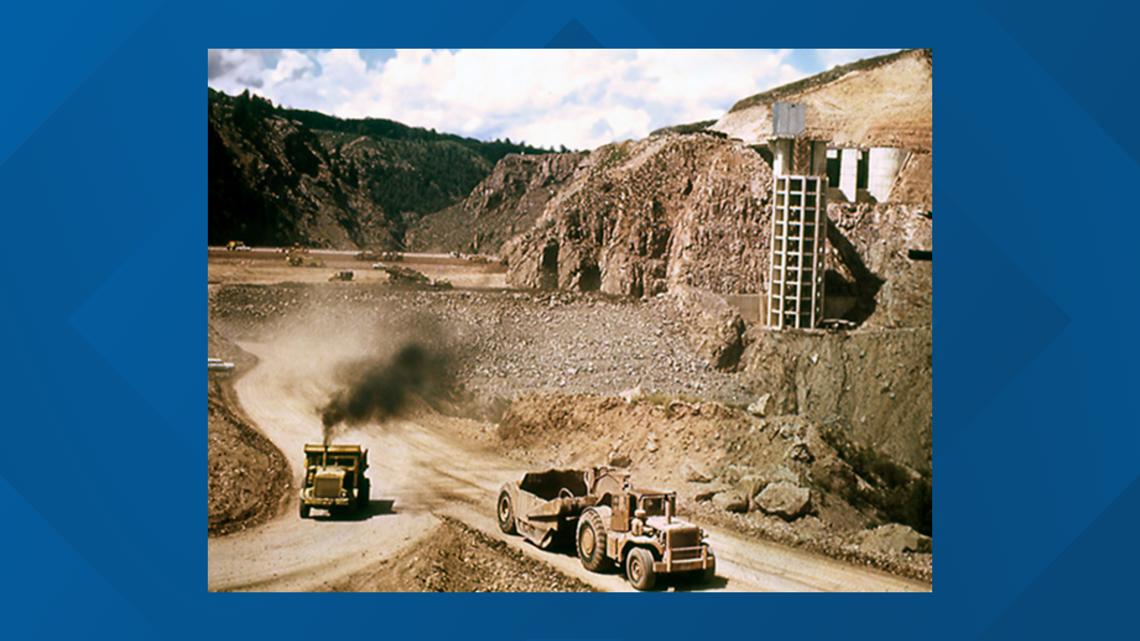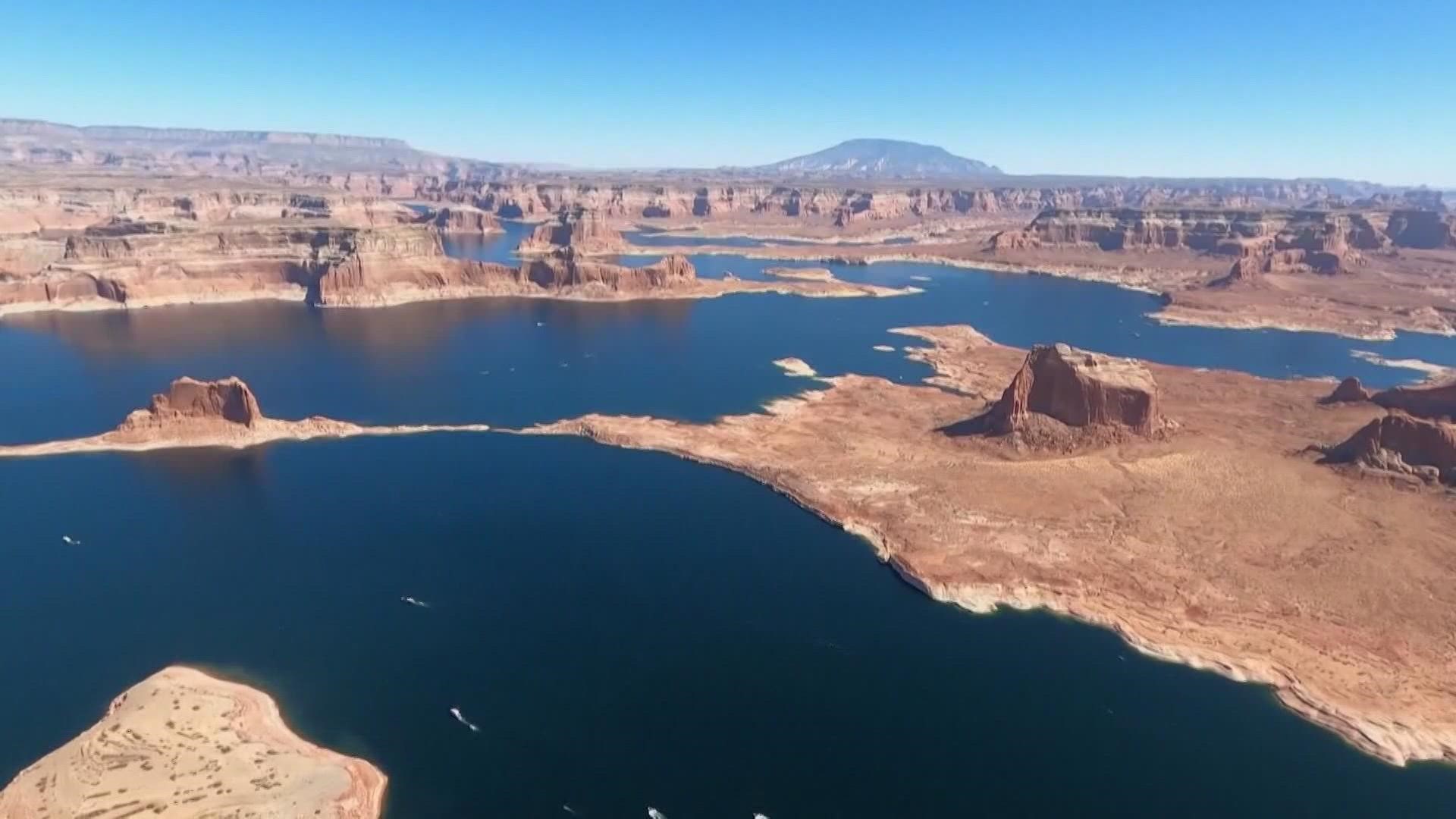SALT LAKE CITY — The country’s second largest reservoir, Lake Powell, is now at its lowest level since it was first filled in the 1960’s, and it’s only 32 feet away from shutting down the hydroelectric facility.
The Bureau of Reclamation said that once the surface elevation at Lake Powell reaches 3,490 feet, the Glen Canyon Dam would no longer be able to generate hydropower.
That elevation introduces new uncertainties for reservoir operations and water deliveries because the facility has never operated under such conditions for an extended period.
The Glen Canyon dam at Lake Powell produces 5 billion kilowatt hours of electricity that powers 5.8 million homes and businesses in 7 states including Colorado.
Lake Powell is also part of a river system that provides water to 40 million people, most of which are downstream from the reservoir.
Now, the Bureau of Reclamation plans to give the lake a little boost, to prevent it from hitting that critically low level. Tuesday, they officially approved what they call an extraordinary action in a time of crisis.
They plan to take 500,000 acre-feet of water out of Flaming Gorge in northern Utah and southwestern Wyoming, and move it to Lake Powell starting this May.
That could reduce the surface elevation at Flaming Gorge by 14 to 15 feet by April of 2023.


They will also withhold another 4800,000 acre-feet from being released downstream to Lake Mead.
Altogether, that’s about a 1 million acre-foot boost – enough water to fill Lake Dillon in Summit County 4 times.
“We are taking this action today because our climate is changing," said Assistant Secretary of Water and Science, Tanya Trujillo. "Our actions are responsible for that, and we have to take responsible action to respond.”
Snowpack topped out well below average in the most western headwaters, and the evaporative demand on a warming atmosphere is taking more moisture out of the soil than ever before.
Trujillo said its a 20-year drought that is responsible for the water crisis in the west, despite a booming number of water users along the Colorado River system.
“The actual trend that we’ve been seeing in the Colorado River basin over the past 20 years has been that the demand has actually decreased or been stable, and our supply side has been decreasing,” she said.
Trujillo said this emergency action of water movement is just a temporary fix that will save Lake Powell and its hydroelectric plant for 12 months.
“Based on the projections that we have seen, we needed to take some immediate actions in order to give us more time to be working with our partners to be thinking about those additional longer-term measures,” she said.
Trujillo said ideas for long-term measures will come out of an inclusive process involving their federal and state partners along with other community members. And those ideas will be backed financially by the Bipartisan Infrastructure Law passed by Congress in December of 2021.
She said there is no single silver bullet that will end the Lake Powell water crisis and did hint at what some of the long term solutions will might entail:
- Increasing the capacity for water recycling
- Repairing aging infrastructure to increase efficiency
- Increasing above and below ground water storage
- Investing in new technology and research to help predict, measure, and monitor water uses
- Seeking new agreements and operating parameters to help manage a reduced supply of water
- Investing in water conservation and education opportunities
BLUE MESA RESERVOIR
The measure of taking water from other reservoirs to boost Lake Powell was also implemented last year, they just didn't take quite as much water.
125,000 acre-feet of additional water was taken from Flaming Gorge in 2021, but that plan also involved taking 36,000 acre-feet of water out of Blue Mesa reservoir in Gunnison County, Colorado.
On top of a very low snowpack year, that measure depleted Blue Mesa to near historic lows and disrupted recreation on the lake.
The Bureau of Reclamation said it is part of Blue Mesa's job to help stabilize the water levels at Lake Powell.
In 1956, the federal government enacted the Colorado River Storage Project Act, which ordered the construction of three other reservoirs on the Colorado and Green River system upstream from Lake Powell.
Those reservoirs are the Flaming Gorge, Blue Mesa, and the Navajo, which is in northern New Mexico and partially in southern Colorado. The lakes were meant to help regulate the flow of the Colorado River and ensure that the turbines at Glen Canyon Dam will always have enough water to produce electricity.


The Bureau of Reclamation said Tuesday that they have not ruled out taking more water from Blue Mesa again depending on how much snowmelt reaches the reservoir.
Snowpack in the Gunnison River basin topped out well below average this year, and Blue Mesa is currently only 30% full.
SUGGESTED VIDEOS: Science & Weather

